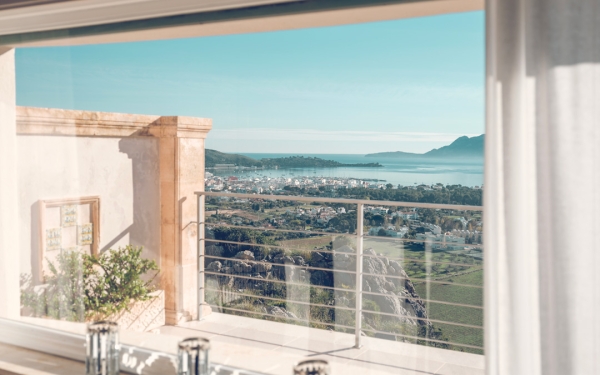Smart Automation and Guest Room Management Systems have a major impact on a facility’s sustainability goals. To achieve these goals and increase energy savings, there is an inexpensive, easy-to-install, and highly effective solution for hoteliers.

When your guest peers out his window, he may be admiring the view of your turquoise waters, white sand beaches, or iconic landmarks. What he probably doesn’t realize is that the very same window is the cause of a significant portion of energy loss.
According to the U.S. Department of Energy, between 25% and 35% of the wasted energy in a building is caused by inefficient windows.
In the summer, windows can absorb additional heat, negating energy used to cool the indoor space.
In the winter, heat can escape through drafty windows that have compromised integrity. Prolonged, intense UV rays are the cause of carpet and furniture fading too.
Intense light through windows can also result in annoying glare that causes discomfort to guests and occupants.
To reduce solar heat gain, there are three widely accepted methods.
- As part of smart guest room automation, draperies can be closed when a room is unsold or unoccupied, especially on sunny sides of the building.
- Installing brand new low-E windows. For new construction, low-E windows may make practical sense as part of a sustainability-themed project.
- For existing structures, applying window film may make the most sense, provided the windows are structurally sound.
What is window film?
This window film consists of several micro-thin layers of polyester film, with a thin metal coating and UV absorbers sandwiched in between. It acts can retain heat in the winter months, and reduce solar heat gain in the summer months, reducing energy costs by up to 10%.
The appearance of this film depends on three factors: the color of the film, the level of visible light transmitted, and the reflectivity degree. It allows natural light in while deflecting heat away from the building. Because there are so many factors and choices, window film can solve a variety of problems. If glare is a problem, window film can reduce glare, for the comfort of your guests. It can also increase privacy, or provide a mirror effect on the outside.
Fast ROI. Installation can range from hours to a few days with little inconvenience to guests and employees. Because this solution is so affordable and quick to install, the return on investment is achieved quickly.
Reduced Carbon Footprint. Hotels looking to reduce their carbon footprint will find an affordable solution in window film. Choosing window film over replacement windows extends the life of your windows, keeping them out of landfills for years.
Preservation of Furnishings. An Energy Management System helps extend the life of furnishings and carpeting by controlling humidity. Because window film blocks UV rays, it also plays a role in preserving furnishings: it helps reduce the fading of furniture and carpeting.
Smart Hotels know that the IoT and Smart Automation are the heavy-hitters in Hotel sustainability. Consider adopting this sustainability trend along with the others you’ve already committed to. It represents a small investment with a big return.